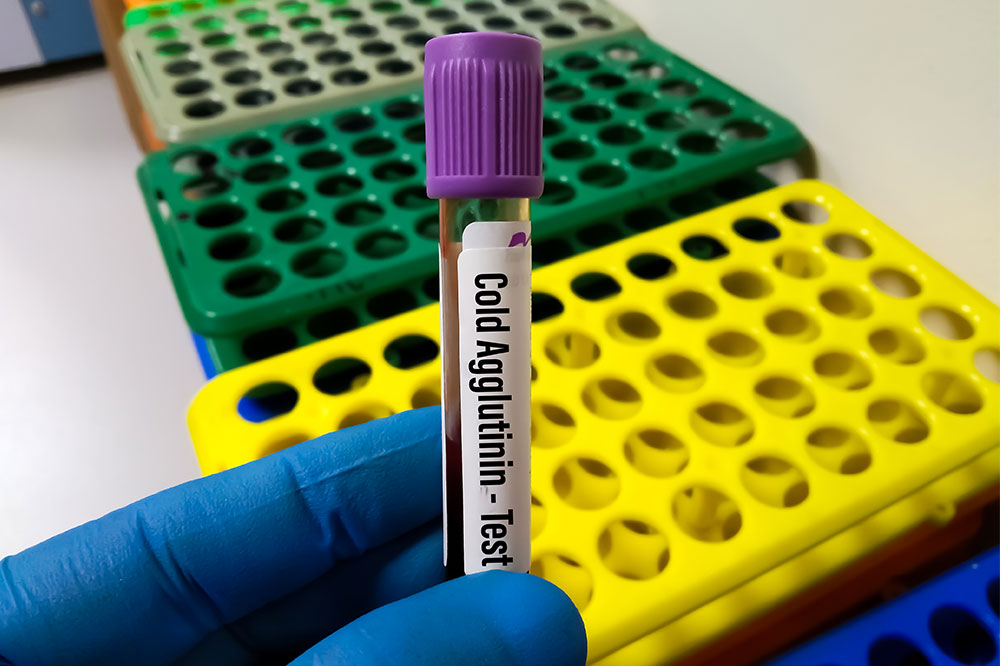
Cold Agglutinin Disease (CAD) – Causes, symptoms, and more
Cold Agglutinin Disease (CAD) is a rare type of autoimmune (antibody) hemolytic anemia. The health condition causes a person’s immune system to misidentify the red blood cells and subsequently attack and destroy them. The condition is triggered when a person is exposed. This condition causes the proteins that would otherwise attack bacteria to latch onto the RBCs, binding them together into clumps. The reaction then causes the red blood cells to die faster, and the body is unable to replace them. Its aftermath results in a shortage of RBCs in the body, which then leads to several other symptoms
Causes
While the condition is normally caused without the influence of any other health problem, there are other, less common factors that lead to CAD and its symptoms.
Some of its triggers are:
- Lymphoma, a type of cancer that affects the lymph nodes, is one of its most common triggers and is noticed in people over the age of 60.
- Viruses such as hepatitis C, AIDS, or the flu
- Other cancers that affect the blood cells include myeloma or leukemia
- Bacterial infections like syphilis, Legionnaires disease, and E. coli
- Malaria
- Other conditions that may force the immune system to attack the RBCs in the body
Symptoms
CAD generally affects a person between the age of 40 to 80 but is more commonly noticed in senior citizens. As for the intensity of its symptoms, it depends on the external climatic condition. Most people affected by CAD develop symptoms of hemolytic anemia. However, the severity of the symptoms also depends on how severe the anemia is.
Here are the symptoms one is likely to experience:
- Tiredness, weakness, headaches, and laziness
- Cold hands and feet, pale skin, and jaundice
- Chest pain, vomiting, and diarrhea
- The condition may also lead to heart problems like irregular heartbeat or even heart failure. Such symptoms are the result of the heart, which does more work to try and replace the RBCs in the body.
- A person may find an enlargement in their spleen (splenomegaly) as well as livedo reticularis, discoloration of specific portions of the skin.
- Raynaud’s disease (acrocyanosis) is another symptom of CAD and results from poor circulation. It leads to numbness and loss of color in the person’s toes or feet. Its symptoms can either be mild or severe.
- CAD also affects women by restricting their regular menstrual cycle.
Some are affected by secondary CAD linked to another predominant health condition. Here, the signs or symptoms completely depend on the current condition, such as:
- Infections and cancers that lead to enlarged or swollen lymph nodes
- Mycoplasma pneumonia infection, the most common cause of secondary CAD that leads to respiratory symptoms.
Diagnosis
Doctors are required to conduct blood tests to identify CAD. Here’s what the doctor is likely to look for after collecting the blood sample:
- A complete blood count to help identify signs of anemia, such as a lower RBC count or an abnormally large count of new RBCs.
- Whether or not the RBCs are clumping together, which confirms the possibility of the disease.
- If these tests show signs of CAD, then the doctor may recommend a direct antiglobulin or Coombs.
- Test for anemia
- The medical professional may also feel the person’s midsection to check if the spleen or liver is potentially larger than normal.
Treatment
The treatments of CAD can differ based on factors such as the severity of its symptoms. It also depends on whether the disease occurred by itself or because of another existing medical condition.
- Mild symptoms do not generally require any treatment. One can always avoid mild symptoms by staying away from the cold or by keeping themselves warm.
- If CAD stems from another condition, the doctor will try and treat the underlying cause and then check for health improvements.
- For people with a low RBC count, the doctor may recommend filtering out the existing blood to rid the body of the antibodies that cause the condition. They may also recommend a blood transfusion. Such treatments are short-term, so they do not eliminate the source of the problem.
- Severe symptoms of CAD may require medications such as a weekly dose of rituximab, a medication that targets select immune cells. It helps treat a significant percentage of people with the condition. However, if the symptoms persist, a doctor may club medications together to prevent the condition from worsening.
While medications will work, it is vital for individuals affected with CAD to care for themselves. They must make sure to keep warm, avoid air conditioning, steer clear of cold foods or drinks, and carry extra warm and comfortable clothes. One can also look for support groups that help connect and learn more about the condition through others with similar symptoms. Also, when it comes to CAD, one must seek help from a trained professional before making any lifestyle changes.




